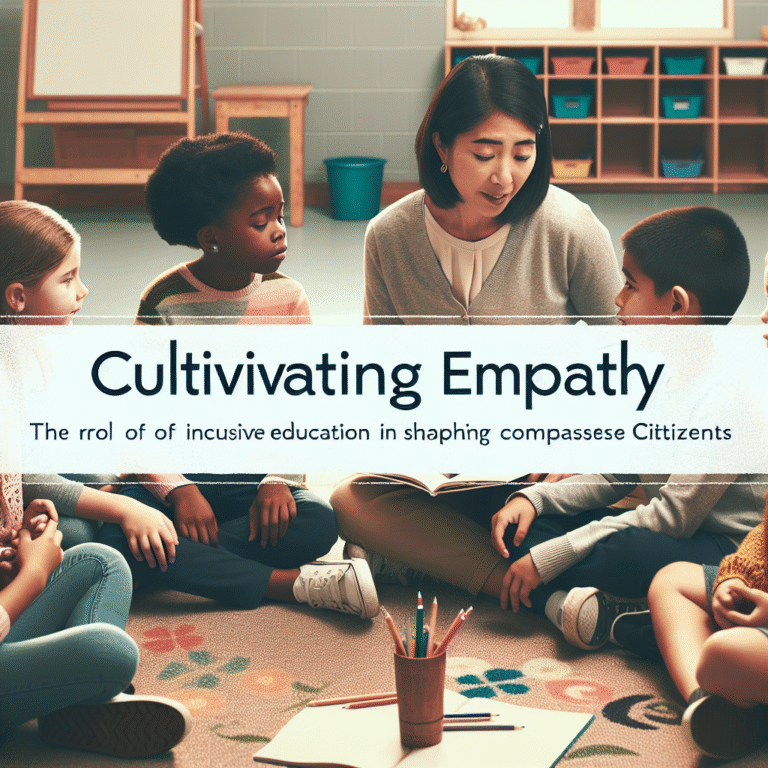
Introduction: The Rising Importance of Mindfulness in Education
In our ever-evolving world, filled with complexities and constant changes, preparing students not just academically but holistically has become a paramount concern. Amidst pressures like social media influence, academic stress, and the overall pace of modern life, there’s an urgent need for tools that foster well-being and resilience. Enter the realm of mindfulness training: preparing students for a balanced future.
Mindfulness is about more than just relaxation; it nurtures the core of emotional intelligence, cognitive flexibility, and social awareness. In this article, we will explore how integrating mindfulness training into educational systems can equip students with the skills they need to navigate life’s ups and downs with grace and confidence.
Understanding Mindfulness: The Foundation
Before diving into the benefits and strategies of mindfulness training, let’s establish what mindfulness truly means. At its core, mindfulness is the practice of maintaining a moment-by-moment awareness of our thoughts, feelings, bodily sensations, and the surrounding environment. It encourages living in the present and providing a non-judgmental space for thoughts and emotions to arise.
The Core Principles of Mindfulness
- Awareness: Being conscious of your thoughts and feelings without reacting to them immediately.
- Non-judgmental: Accepting your emotions and experiences without labeling them as good or bad.
- Presence: Focusing on the current moment rather than dwelling on the past or worrying about the future.
These principles form the bedrock of mindfulness training: preparing students for a balanced future, helping them cultivate a deeper understanding of themselves and the world around them.
The Need for Mindfulness in Education
As educational environments become increasingly competitive and high-pressure, students often find themselves overwhelmed. Stress and anxiety are reported by a significant number of students, leading to burnout, disengagement, and mental health issues.
Statistics that Tell the Story
- Anxiety Disorders: Approximately 31.9% of U.S. adults experience some form of anxiety during their lifetime, according to the Anxiety and Depression Association of America.
- Student Burnout: A study by the National Institute of Mental Health found that 16.5% of high school students experienced symptoms of depression, a critical contributing factor to educational disengagement.
These statistics underline the importance of supporting mental health through programs such as mindfulness training: preparing students for a balanced future by equipping them with coping mechanisms to handle stress effectively.
Case Studies: Successful Implementations of Mindfulness in Schools
Several schools and educational programs have successfully integrated mindfulness training within their curricula, providing valuable examples for future initiatives.
Case Study 1: The Mindful Schools Program
Overview: The Mindful Schools program in California has been instrumental in teaching mindfulness to children through a structured curriculum.
Key Points:
- Target Group: The program serves students from preschool through high school.
- Results: Participants showed significant improvements in attention and decreased anxiety levels. Surveys indicated a 23% increase in students’ ability to focus and a 20% decrease in reported stress.
Relevance: This case illustrates how structured mindfulness training can yield tangible benefits in students’ emotional and academic lives, embodying the essence of mindfulness training: preparing students for a balanced future.
Case Study 2: The Inner Explorer Program
Overview: Inner Explorer implements daily mindfulness practices in schools across the United States, allowing teachers to streamline the integration of mindfulness into their classrooms.
Key Points:
- Training: Offers a guided approach with audio sessions that require minimal preparation.
- Outcomes: Teachers reported improved classroom behavior (up to a 30% reduction in disruptive behavior) and heightened emotional well-being among students.
Relevance: This program demonstrates that even simple mindfulness practices can lead to significant improvements in classroom dynamics, supporting the notion of mindfulness training: preparing students for a balanced future.
How Mindfulness Training Benefits Students
Mindfulness training: preparing students for a balanced future brings a plethora of benefits, spanning emotional, cognitive, and social domains.
Emotional Benefits
- Increased Resilience: Students learn to manage their emotions better, enhancing their ability to cope with stress and adversity.
- Improved Self-Regulation: Mindfulness fosters emotional regulation, allowing students to respond to challenges rather than react impulsively.
Cognitive Benefits
- Enhanced Focus and Concentration: Regular mindfulness practice has been shown to improve attention spans, leading to better academic performance.
- Improved Memory Retention: Mindfulness cultivates mental clarity, aiding in memory consolidation and recall.
Social Benefits
- Better Relationships: Mindfulness encourages empathy and compassion, mediating positive interactions among peers.
- Conflict Resolution Skills: Students equipped with mindfulness training are more likely to approach conflicts judiciously, seeking understanding rather than escalation.
These benefits reinforce the idea that mindfulness training is not merely a supplemental activity, but a fundamental component of education—truly preparing students for a balanced future.
Implementing Mindfulness Training in Schools
Creating a sustainable mindfulness curriculum involves careful planning and implementation. Here’s how schools can integrate mindfulness practices.
Step-by-Step Guide for Implementation
- Staff Training: Facilitate workshops to train teachers in mindfulness practices so they can lead sessions effectively.
- Curriculum Integration: Develop a structured program with age-appropriate mindfulness activities for different grade levels, ensuring a cohesive approach.
- Daily Practices: Introduce short guided sessions—5-10 minutes—at the beginning or end of classes to cultivate routine and commitment.
- Parent Involvement: Engage families by offering workshops that teach mindfulness techniques, reinforcing these practices at home.
- Evaluation and Feedback: Collect data on the program’s effectiveness through surveys and feedback, making necessary adjustments for continual improvement.
Tables and Charts: Clarifying Key Data
Benefits of Mindfulness Training
| Benefit | Description | Evidence |
|---|---|---|
| Increased Attention | Enhanced focus during lessons | 23% improvement in Mindful Schools study |
| Emotional Regulation | Better management of emotions | 20% decrease in anxiety reported |
| Academic Improvement | Improved grades and class performance | Multiple studies affirm this correlation |
Percentage of Students Reporting Stress and Anxiety
| Source | % of Students Reporting Issues |
|---|---|
| National Institute of Mental Health | 16.5% |
| Anxiety and Depression Association | 31.9% |
Conclusion: The Path Forward
Mindfulness training: preparing students for a balanced future is not just a trendy addition to educational curricula; it is a crucial strategy for nurturing well-rounded, resilient individuals who can thrive in a complex world. By prioritizing mental health alongside academics, educators and school administrators can create environments where students learn not just content, but crucial life skills.
As awareness of mental health continues to grow, integrating mindfulness into the classroom presents a unique opportunity to shape future generations. It is both a responsibility and a privilege to equip our students with the tools they need to navigate life’s challenges gracefully.
Let’s champion mindfulness not simply as an initiative but as an essential, enduring part of the educational experience.
FAQs About Mindfulness Training: Preparing Students for a Balanced Future
1. What age should mindfulness training begin?
Mindfulness training can start as early as preschool. Adapting the techniques to be age-appropriate ensures that children can grasp the concepts.
2. How long should mindfulness sessions last?
Short, daily sessions of 5-10 minutes are often most effective, allowing students to engage without feeling overwhelmed.
3. Is mindfulness training evidence-based?
Yes, numerous studies support the positive impacts of mindfulness on emotional, cognitive, and social performance among students.
4. Can mindfulness training be implemented remotely?
Absolutely! Many resources and apps offer guided mindfulness practices that can be accessed virtually, making it easier to reach students wherever they are.
5. What if a student resists mindfulness exercises?
It’s essential to create a supportive atmosphere. Encouraging participation without pressure and allowing for exploration can help students feel more comfortable.
This journey into mindfulness training: preparing students for a balanced future highlights its essential role in education. With empathy, patience, and commitment, we can usher in a generation equipped to face the future with resilience and mindfulness.

















